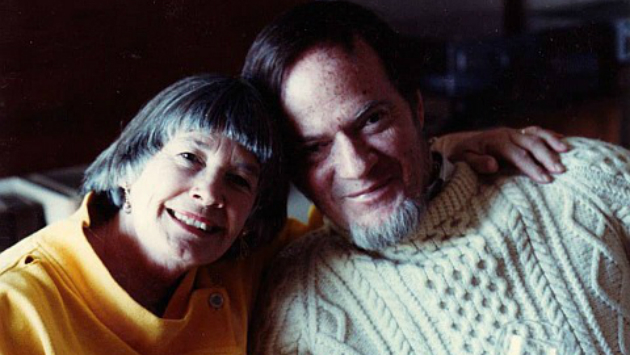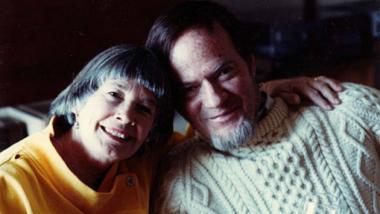
After years of daily email contact, besides frequent meetings at concerts and operas, the last message I received from David Littlejohn said he may not attend the San Francisco Opera's production of Les Troyens, adding: "Berlioz’s version has remarkably little to do with Virgil’s, which is a great read, and infinitely better than the opera."
What struck me was the message itself, not his typical flash of maverick intelligence in the aside — how could he miss a major event in the Opera House where he was a constant presence for decades?! The foreboding was quickly borne out by the news: on June 4, Littlejohn died in his Kensington home after what his family called "a long physical decline."
Similarly to so many aspects of this remarkable man of renaissance intellect and inspiring courage, that "physical decline" was also out of the ordinary. When he departed at age 78, Littlejohn had spent more than five decades on crutches, then a decade in a wheelchair, as the result of a paralyzing diving accident at age 14. For all that time, today's substitution of "challenged" for "handicapped" was astonishingly accurate in his case.
Writer, music, and art critic for major publications, a beloved professor at UC Berkeley for three decades, world traveler, TV, and radio personality, the man in the wheelchair outdid most people without his condition. Littlejohn had one more accomplishment beyond imagination: He attended Burning Man in the scorched Nevada desert several times, even recently, and wrote about the festival.
And yet, beyond all his adventures, the most important thing in life for Littlejohn was writing, "which is like breathing for me — when you stop it, you die." As to the subject of writing, there was no limit: “I have been hopelessly eclectic since I was 13,” he once wrote, “when I simultaneously fell in love with classic country and opera: I saw Hank Williams live three times before he died, and chased Maria Callas around Europe during my semester off in ’57.”
Besides some 400 essays and hundreds of reviews published in the Wall Street Journal and elsewhere, Littlejohn also covered a great range of subjects in his 14 books, from The Ultimate Art, about opera, and The Man Who Killed Mick Jagger to his last one, a hilariously dystopian novel titled, The Big One.
His panoptic mind, wide-ranging travel experience, and love for architecture all coalesced in his instant email response just a month ago to an article I forwarded to him about a dozen controversial buildings, all this information at his fingertips:
Long a dedicated architectural tourist, I’ve seen 11 of these — Frank Gehry’s Pop music museum in Seattle, most of the Antonio Gaudí buildings in Barcelona, Oscar Niemeyer’s Brasilia, the Expo 58 Atomium in Brussels (under construction in ’57, during my first European tour), the World’s Fair buildings in Montreal (Bucky Fuller’s Biosphere and Moshe Saafdie’s Habitat houses), Piek Blom’s Cubic houses in Rotterdam, Santiago Calatrava’s new flying wing of 2001 for the Milwaukee Art Museum.I got to review Norman Foster’s 30 St. Mary Axe (aka The Gherkin) in London, which I loved, and Daniel Libeskind’s insane new wing of the Denver Art Museum, which I hated. Plenty of others still on my wish list — almost all of Zaha Hadid’s work, new and old things in China — but my touring days are done. At this stage, the manmade places I most regret missing are Sicily and Kyoto, both of which I once made serious plans to see.
At KQED TV and radio, Littlejohn had an important role in the influential public television station's newsroom. He wrote recently: "I love good criticism, as much as I hate bad criticism — which led to 10 years of television programs on KQED and the PBS network (268 programs) as their 'Critic at Large'." KQED-FM cultural correspondent Cy Musiker messaged when he heard the news: "It was in Littlejohn's class that I got a glimpse of what fun it could be to cover the arts, and how important it could be as well."
Littlejohn, whose great-great-grandfather emigrated to California from Vermont during the Gold Rush in 1850, was born in San Francisco in 1937. He attended Junipero Serra High School in San Mateo and graduated from UC Berkeley in 1959.
He received his Ph.D. from Harvard in 1963, and six weeks after their first date married Sheila Hageman of London, who would remain the great love of his life, widely admired by all who knew her. She died in 2009.
Littlejohn is survived by his daughter, Victoria Littlejohn of Burbank, CA; a son, Gregory Littlejohn of Nevada City, CA; three grandchildren; a brother; and three sisters. He had requested no funeral or memorial service, but provided for a party in his memory, to be held at his home.

